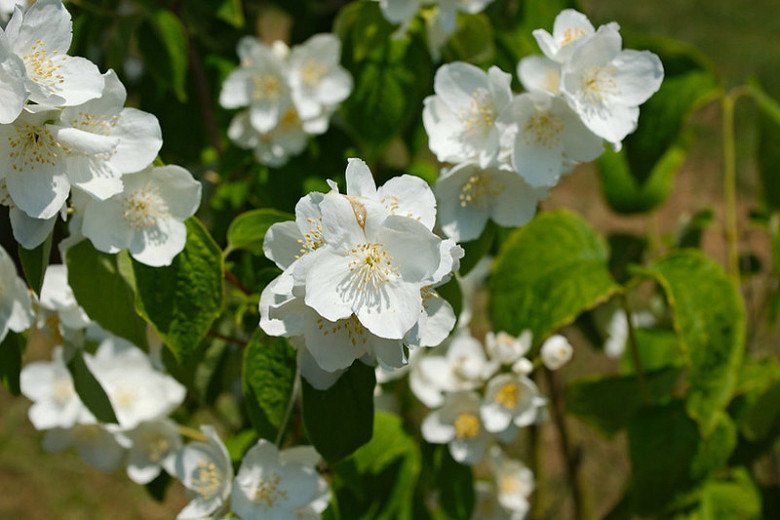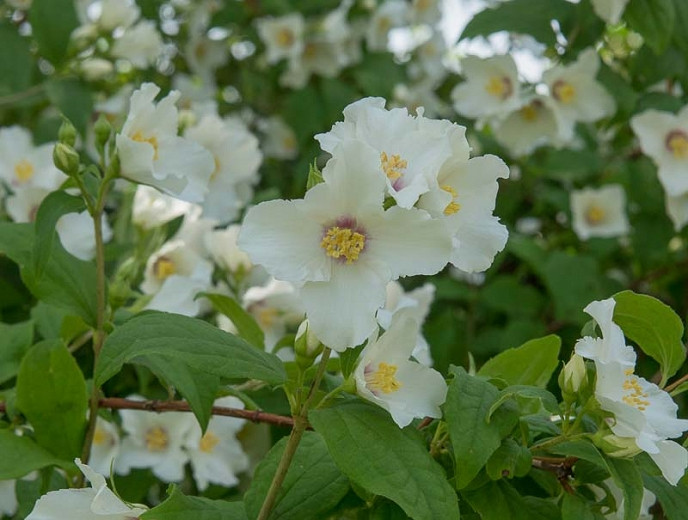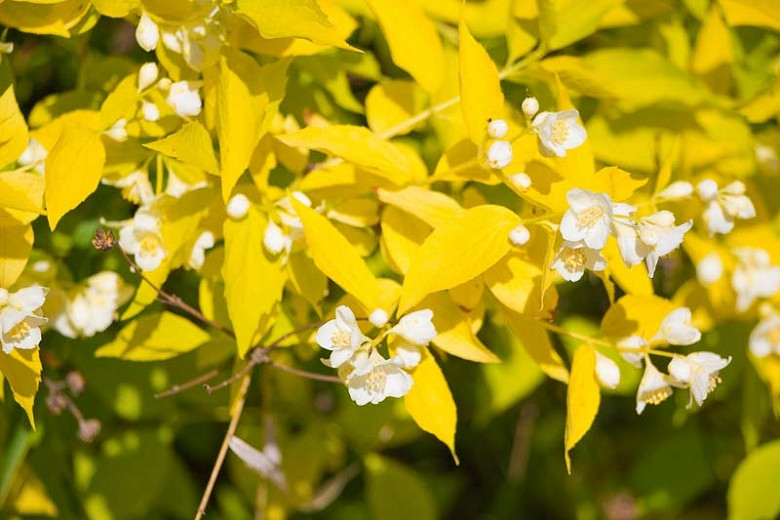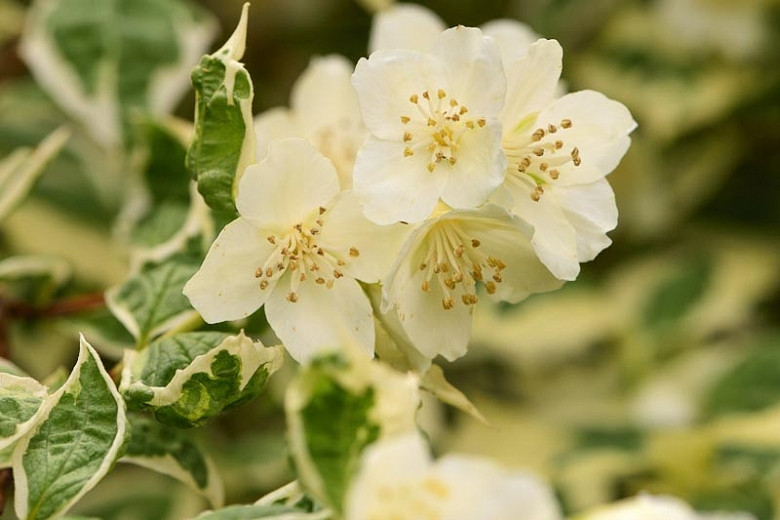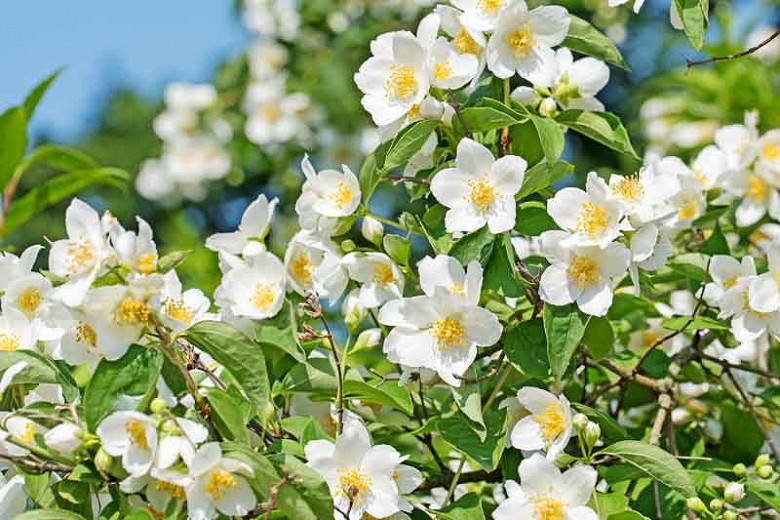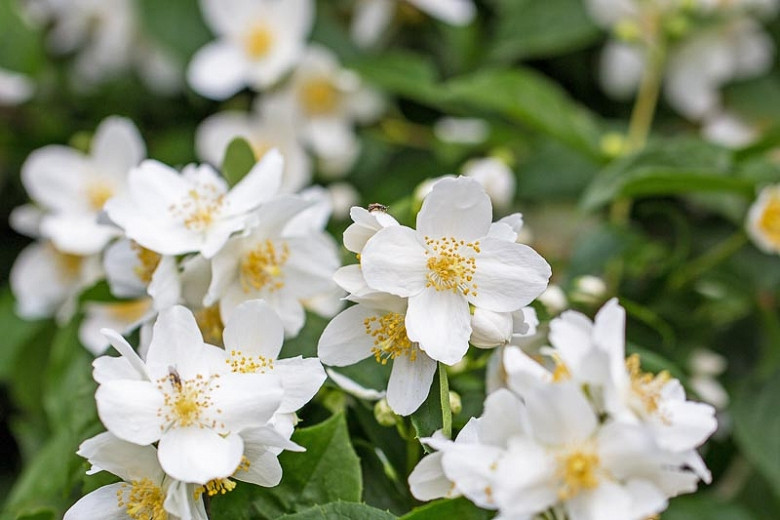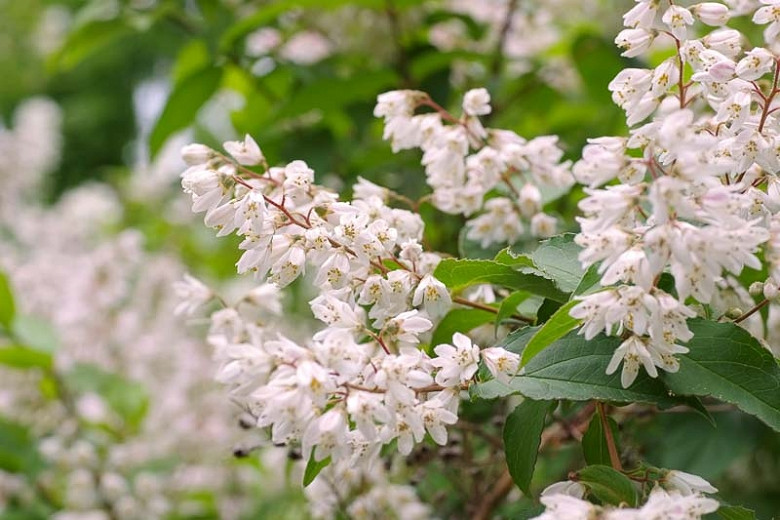Philadelphus inodorus (Scentless Mock Orange)
Tough and fast-growing, Philadelphus inodorus (Scentless Mock Orange) is a dense, upright-oval, deciduous shrub with multiple erect branches that tend to arch with age. In late spring to early summer, it boasts profuse clusters of cup-shaped, 4-petaled, white flowers, 1 in. across (2.5 cm). Borne along the new growth, the blossoms contrast nicely against the foliage of oval, serrated, dark green leaves, 2-4 in. long (5-10 cm). The branches exfoliate in strips and develop a paper-like, orange-brown bark over time. While this strong-growing shrub is magnificent in bloom, it tends to fade into the background the rest of the year. Easy to grow, Scentless Mock Orange is adaptable to a wide range of well-drained soils and tolerates drought, heat and humidity. It makes a good border plant or screen and can be planted along woodland edges. This eastern and central US native is also great for slope stabilization and naturalization.
- Grows up to 6-10 ft. tall (180-300 cm) and 6-8 ft. wide (180-240 cm).
- A full sun to part shade lover, this plant is best grown in average, moist, well-drained soils. Tolerates drought, heat and humidity.
- Great for shrub borders, foundation plantings, informal flowering hedges.
- Generally pest and disease free. The flexible stems withstand wind, snow, and ice.
- Blooms on previous year’s wood, so prune immediately after flowering. Old plants can be rejuvenated after flowering by cutting about one-third of the old growth.
- Native to eastern and central USA.
Requirements
| Hardiness | 5 – 10 |
|---|---|
| Plant Type | Shrubs |
| Plant Family | Philadelphus – Mock Oranges |
| Exposure | Full Sun, Partial Sun |
| Season of Interest | Spring (Late)Summer (Early) |
| Height | 6' – 10' (180cm – 3m) |
| Spread | 6' – 8' (180cm – 240cm) |
| Spacing | 72″ – 96″ (180cm – 240cm) |
| Water Needs | Average |
| Maintenance | Low |
| Soil Type | Clay, Loam, Sand |
| Soil pH | Acid, Alkaline, Neutral |
| Soil Drainage | Moist but Well-Drained, Well-Drained |
| Characteristics | Cut Flowers, Showy |
| Native Plants | United States, Midwest, Illinois, Indiana, Ohio, Wisconsin, Northeast, Connecticut, Massachusetts, Maryland, New Jersey, New York, Pennsylvania, Rhode Island, Rocky Mountains, Montana, Southeast, Alabama, Arkansas, Florida, Georgia, Kentucky, Louisiana, Mississippi, North Carolina, South Carolina, Tennessee, Virginia |
| Tolerance | Drought |
| Attracts | Birds |
| Garden Uses | Banks and Slopes, Beds and Borders, Hedges and Screens |
| Garden Styles | Coastal Garden, Informal and Cottage |
